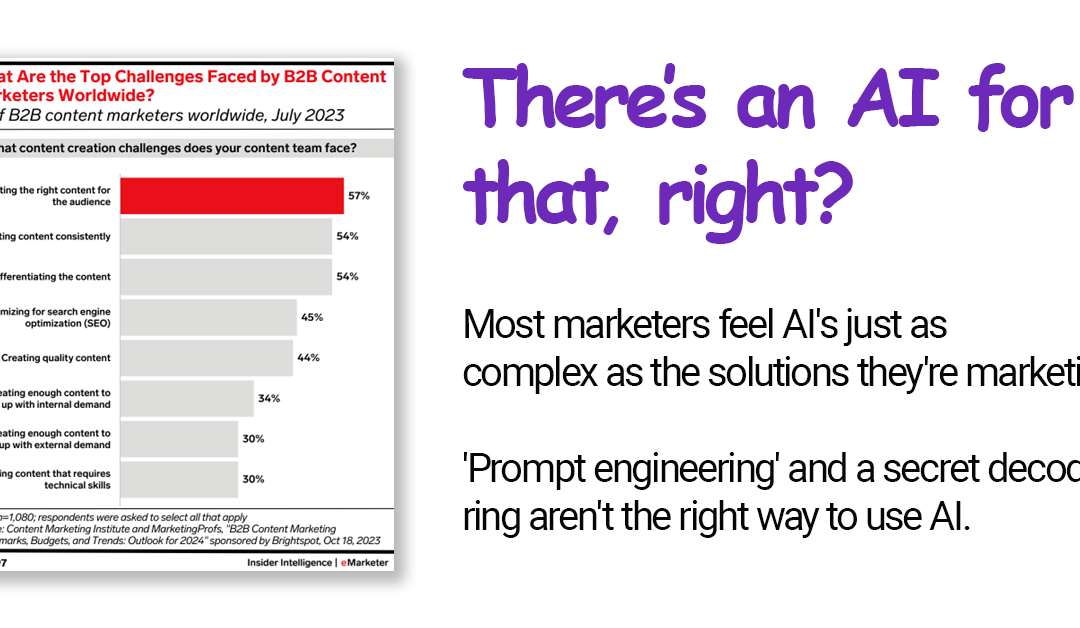
AI Content Adoption Shouldn’t Be Hard
You’re Right, Using AI Shouldn’t Be This Hard!
Creating personalized, relevant content is and has been a challenge for marketers. Statistics reflect these challenges:
- 57% struggle with aligning content to their audience’s expectations,
- 54% find maintaining content consistency and differentiation significant hurdles.
Ironically, AI’s promises are perceived to mirror the complexity of the very solutions it’s intended to benefit. The promise of AI’s efficiency and efficacy capabilities has not yet been realized.
The art of ‘prompt engineering’—an endeavor at times as cryptic as it is technical—remains misunderstood as the necessary approach to use AI.
Any member of an organization should be able to use simple English questions and receive a robust human-quality response from an AI tool.
We hear marketing leaders use the terms “it gives me hives” and “anxiety” to describe their view of GenAI tools.
Interestingly, this is similar to how leaders a generation earlier described the DOS prompt on early PCs!
One piece of advice to sales and marketing leaders… You’re right; these tools shouldn’t be that hard. #ItsThemNotYou
The question wasn’t whether everyone would have a PC on their desk but rather when it would happen. The same is true with GenAI.
The question then is, how?
Find the use cases that are critical to your company. Is it content creation, sales enablement, competitive intelligence, ABM personalized content, or something else?
Next, find options that your team CAN adopt. Use the lens of usability.
AI can’t deliver value in efficiency and efficacy if nobody knows how to use the tools!



